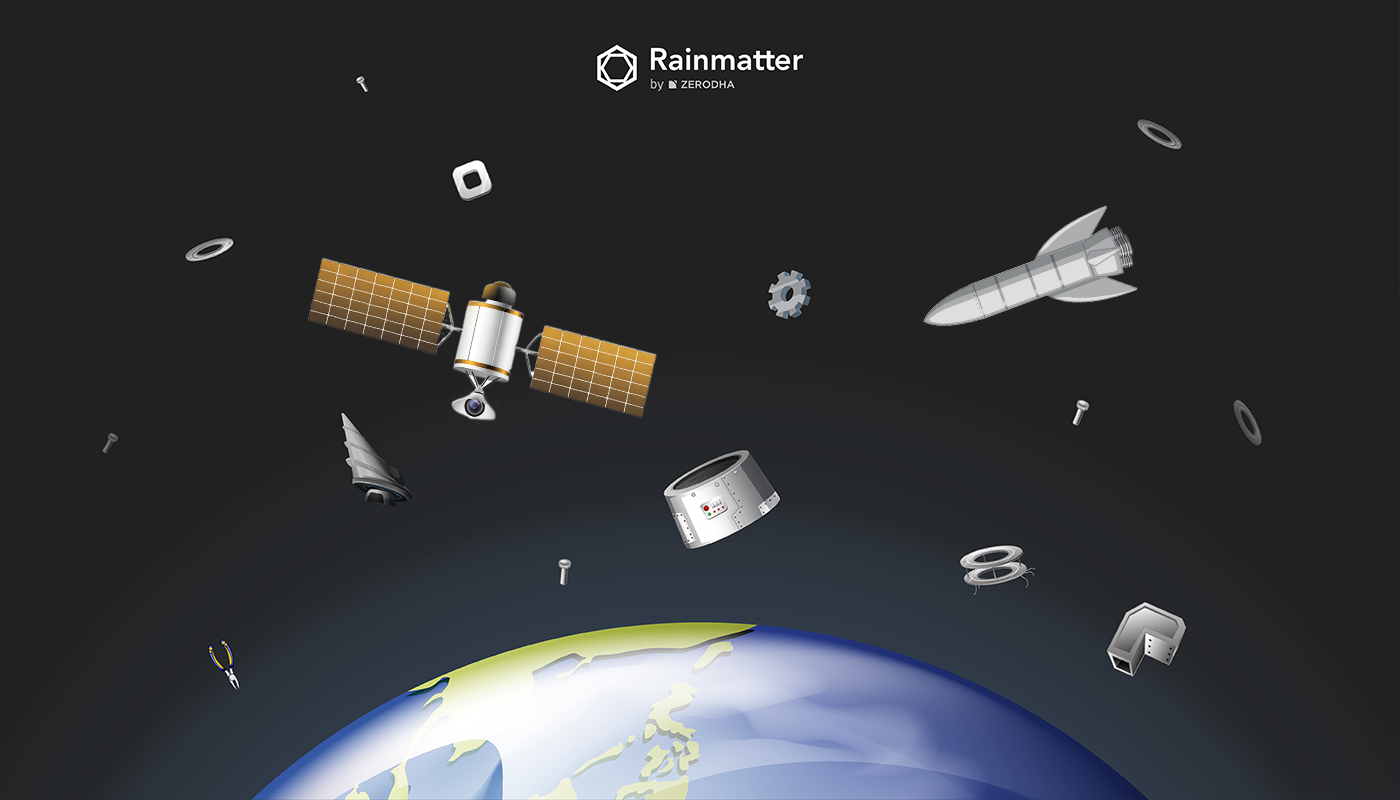
Orbiting Chaos: The Growing Threat of Space Debris
In May 2016, astronauts aboard the International Space Station discovered a crack in one of their windows. The culprit? A speck of paint no bigger than a grain of sand, hurtling through space at 17,500 mph. This tiny fragment barely visible to the naked eye, carried enough kinetic energy to damage humanity’s most expensive laboratory floating 400 km above the Earth.
This incident perfectly captures the paradox of our space age. What began as humanity’s greatest adventure, turned into one of our messiest problems. When the Soviet Union launched Sputnik on October 4th, 1957, it marked the dawn of the space era with a single, basketball-sized satellite beeping its way around Earth. Today, nearly seven decades later, we launch 3-4 rockets weekly, filling our skies with an intricate web of technology that has revolutionized life on Earth.
Satellites have become the invisible infrastructure of modern civilization. They beam down the internet connection that lets us video chat with family across continents, predict hurricanes, saving thousands of lives, and guide our cars through unfamiliar streets with GPS precision. Weather satellites track storms before they form, while communication satellites make global commerce possible in real-time. It’s hard to imagine our interconnected world without this celestial network.
However, every launch, every satellite, every space mission leaves something behind. The Earth’s orbit is a sprawling junkyard of defunct spacecraft, rocket fragments, paint flecks and tiny metal particles that can crack space station windows and the satellites that run our world. This orbital debris, ranging from bus-sized defunct satellites to microscopic particles, now races around Earth at speeds that turn even the smallest fragment into a potentially catastrophic projectile.
The Earth’s orbit is divided into different zones based on altitude. They are:
- Lower Earth Orbit (LEO): This orbit ranges from an altitude of 180km – 2000km, and is also the orbit where the International Space Station is located. This orbit also houses many telecommunications satellites, imaging satellites and Earth observation satellites.
- Medium Earth Orbit (MEO): Ranging from 2,000 km to ~35,786 km, this orbit houses mostly GPS satellite constellations.
- Geostationary Orbit (GEO): This orbit is at a fixed altitude of 35,786 km and contains weather, broadcast and communication satellites. These move at the same speed as Earth, hence the term geostationary.
- Highly Elliptical Orbit (HEO): They are elliptical orbits with low points around 1000km altitude and high points beyond geostationary altitudes. The satellites in this orbit are often used for communication in polar regions or for research purposes.
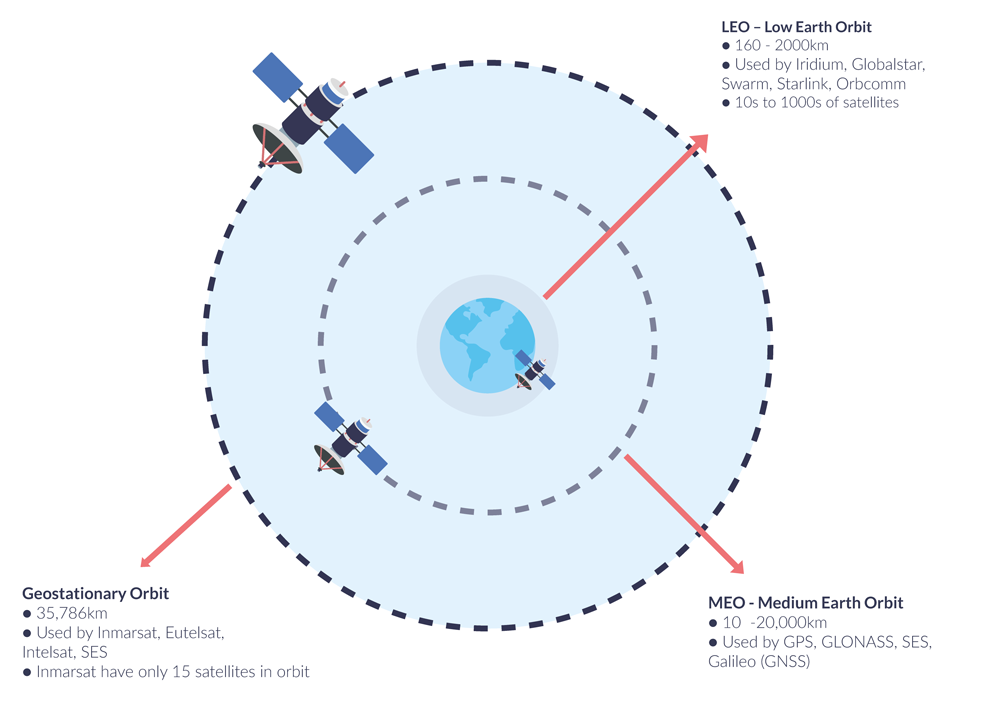
Source: groundcontrol.com
The LEO is often described as the junkyard of space, where over a million pieces of space debris is found. Currently in the Earth’s orbit, there are about 2,000 active satellites and about 3,000 defunct satellites. As of now, there are around 34,000 pieces of space junk larger than 10cm in size. It is estimated that there are over 128 million pieces of space junk larger than 1 millimetre. Even small particles like paint flecks and objects less than 1 mm in size can create large-scale damage as they orbit at speeds of about 8km/s in the LEO.
Objects don’t stay in orbit forever. As they revolve around the Earth, they lose energy and go to lower altitudes, eventually re-entering the Earth’s atmosphere. Objects in orbits closer to the Earth take a few decades to get out of orbit and fall back on Earth, but objects in GEO and higher altitudes of LEO can take centuries to finally fall back to Earth. Space debris does not often cause serious damage on Earth, as most of it gets burnt up as it enters the atmosphere, thereby avoiding collision entirely with the Earth. However, to put things into perspective, an average of 1 cataloged piece of debris has fallen back on Earth each day for the last 50 years, so one can only imagine the scale of junk floating around us.
How does space debris come to be?
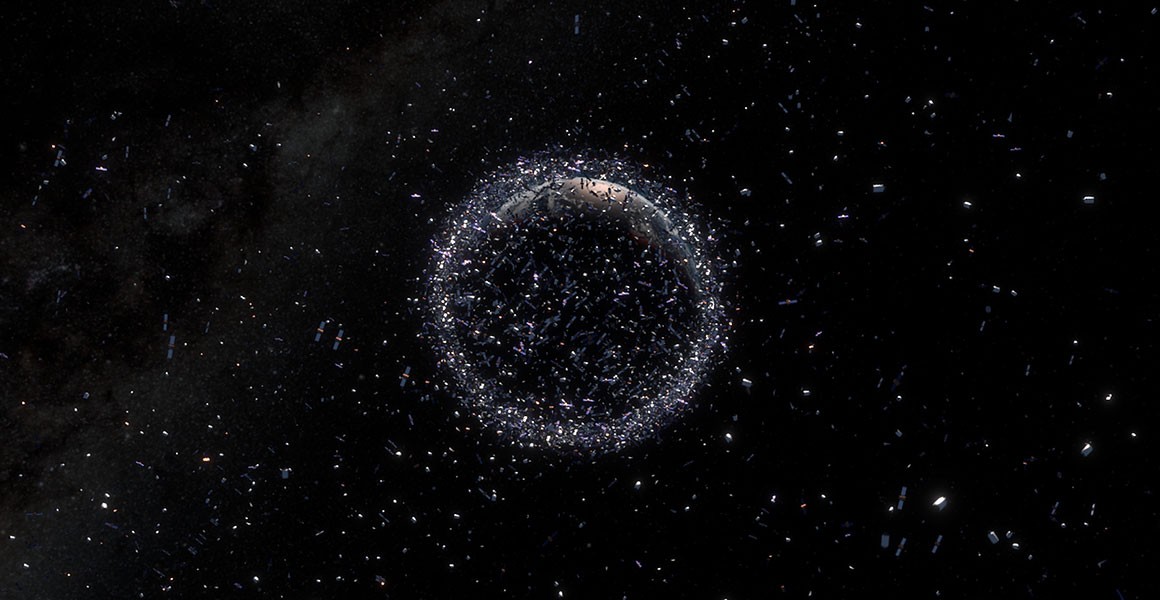
Source: ESA
All space junk is a result of us launching objects into space, and they remain in orbit until they re-enter the Earth’s atmosphere. These can include defunct satellites that are left in orbit when they are no longer useful. They are either left in lower, short term orbits or pushed to higher, graveyard orbits, where they can puncture and release coolants that freeze into droplets of solid sodium-potassium alloy, creating more debris.
Collision or anti-satellite tests in orbit can also create space junk. When two satellites collide, they can break apart into thousands of pieces, creating lots of new debris. Between 2018 and 2023, there were 18 reported incidents involving orbital debris hitting satellites or rockets, and many more near-misses.Countries like China, Russia and India have used missiles to practice blowing up their own satellites as part of military operations, which have created vast amounts of new debris.
The Earth’s orbit is not the only place where one can find spacejunk. As of February 2024, Mars has a staggering seven tons of human made debris on its surface and the Moon has around 190,000 kilograms of materials left by humans.
Kessler Syndrome
The Kessler Syndrome, named after NASA scientist David Kessler in 1978, proposes that if there is too much space junk in orbit, it could result in a chain reaction where more and more objects collide with each other and create more space junk in the process, to a point where the Earth’s orbit would be rendered unusable.
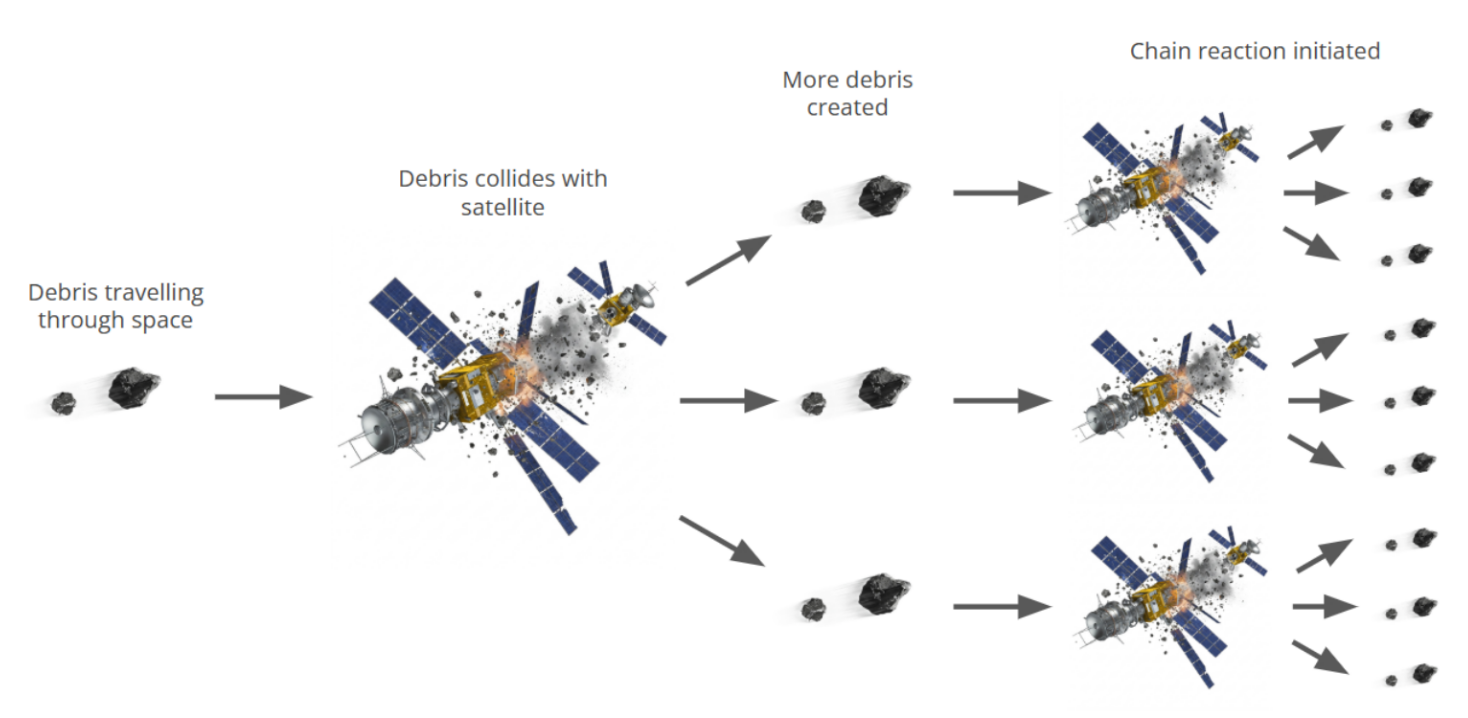
Source: amplyfi.com
This situation is a little far from reality today, but experts worry that a variant of this could be a problem one day as more and more satellites and rockets are being launched every week. Mega constellations that will beam down internet to the Earth are being planned by several companies including SpaceX and Amazon. A small-scale example of this is SpaceX’s Starlink constellation. This, if successful, could mean an additional 50,000 satellites in orbit. This means a lot more possibilities of collision.
Satellites sometimes need to perform collision avoidance maneuvers in order to avoid the debris in orbit. Satellite operators may observe and monitor space debris as part of maneuver planning. In total, hundreds of collision avoidance maneuvers are performed every year across all satellites, including the International Space Station. Spacecraft are sometimes fitted with a Whipple shield, which is a type of spaced armour shielding to protect crewed and uncrewed spacecraft from collisions with micrometeoroids and orbital debris whose velocity ranges from 3 to 18 km/s. The Whipple shield, invented by Fred Whipple, is designed to withstand collisions with debris up to 1cm.
Collisions are, however, rare. A Chinese satellite broke up in March of 2021 after a collision, and prior to that, the last satellite to collide and be destroyed by space debris was in 2009.
Does space junk have an effect on the Earth’s climate?
Space debris does have an impact on climate change but the relationship is somewhat indirect. When space debris re-enter the atmosphere, it burns up and releases metal oxides and pollutants into the stratosphere. These aerosols can damage the ozone layer and alter Earth’s thermal balance, potentially affecting climate and cloud dynamics.
Greenhouse gas emissions cause cooling and contraction of the Earth’s upper atmosphere, also known as the thermosphere. This reduces atmospheric density and drag on satellites and debris in LEO, allowing space junk to remain in orbit longer, and increasing risks of collision which can generate even more debris. Due to this, the capacity of LEO to safely host satellites could decrease by 50-82% by 2100, complicating space operations and sustainability.
How can this be cleaned up?
Space debris is tracked from the Earth using radar and optical detectors such as lidar. It has been observed that institutional factors such as political, legal, economic and cultural ordnances are the greatest impediment to cleanup. There is no real commercial incentive to act as costs are not assigned to polluters. There is also currently no international treaty or law to minimize space debris, but the UN has published voluntary guidelines on developing standards for debris mitigation. They ask that all companies remove their satellites from orbit within 25 years after the end of their mission.
Some solutions to tackle this problem include using harpoons to grab satellites, catching them in a huge net, using magnets to remove them from orbit or even heating them up with lasers to increase their atmospheric drag so they fall out of orbit and re-enter the atmosphere, where they burn up. While these methods can be useful for larger objects, there is no real solution today that can address small pieces of debris and paint flecks. That being said, there are active debris removal missions underway with promising technology and strong institutional support, marking a significant shift from theory to practical cleanup efforts. Although challenges remain, these initiatives offer hope for managing and eventually reducing the space junk threat to sustainable levels.
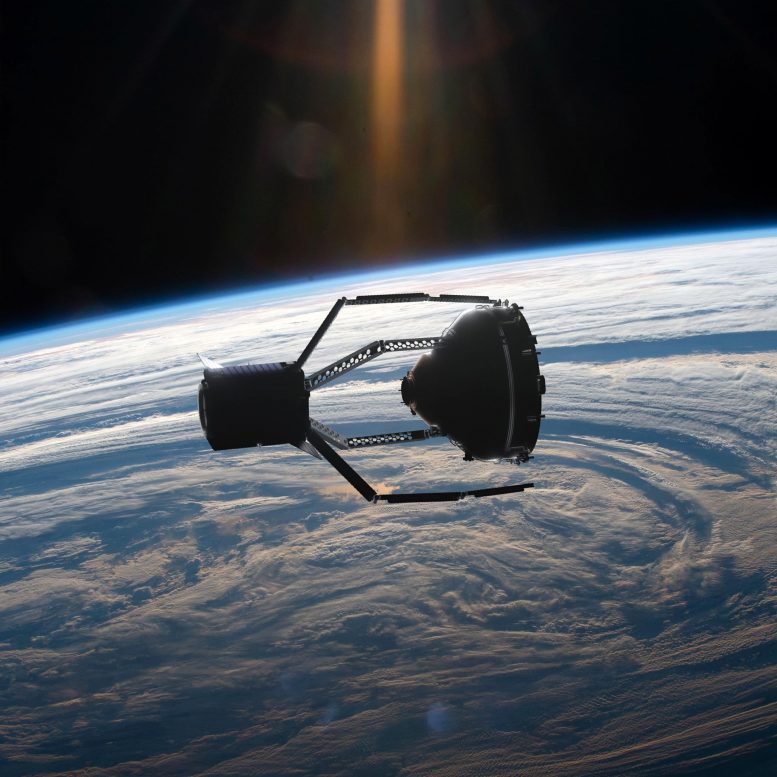
Source: SciTech Daily
Conclusion
Space has always been about pushing boundaries, taking risks, and reaching for something greater than ourselves. But perhaps the greatest test of our spacefaring maturity isn’t how far we can travel or how many satellites we can launch. It’s whether we can learn to be better stewards of the cosmic neighbourhood we’re just beginning to call home. The paint fleck that cracked that window might have been small, but its message was clear: space may be infinite, but our responsibility to protect it is very real.
While writing about space junk might seem like a cautionary tale, it’s worth noting that our fund remains bullish on space technology’s potential. We’ve invested in GalaxEye, which is developing the world’s first multisensor imaging satellite constellation that combines Synthetic Aperture Radar (SAR) and multispectral sensors which could provide real-time visibility for defense, maritime, insurance, and agriculture sectors and Agnikul Cosmos which is making history by launching the world’s first rocket with a fully 3D-printed engine. Agnikul builds launch vehicles capable of taking micro and nanosatellites to Low Earth Orbit on-demand. Both these companies represent the new wave of innovation and entrepreneurial spirit driving space forward. The key is ensuring this next wave of space development learns from past mistakes and builds sustainability into its foundation from day one.

Loved this post – well researched and well written!